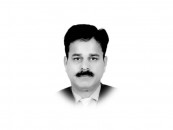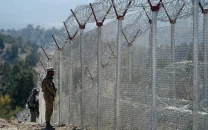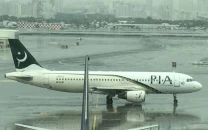A case for English in Pakistan
Out of the wide spectrum of problems related to education in Pakistan, the language issue persists unabated.

The writer is a freelance journalist based in the US
Considering this, the official status of English in Pakistan requires serious modifications. According to Section 251 of the Constitution of Pakistan: 1) The National language of Pakistan is Urdu; 2) The English language may be used for official purposes until arrangements are made for its replacement with Urdu; and 3) A Provincial Assembly may by law prescribe measures for the teaching, promotion and use of a Provincial language in addition to the National language.
Despite English being constitutionally trivialised, Urdu is still not the ‘official’ language nor has it entirely replaced English. This has crippled the country’s education system, polarising students according to English language capability. The non-adherence to constitutional rules by private educators has created a severe backlash for government-run schools. Dr Tariq Rahman writes, “The civil bureaucracy and the armed forces ... invested heavily in creating an English-medium system of instruction for the elite contrary to the declared policies of the state of Pakistan”. The private and elite schools’ emphasis on English gives their students a far greater competency in the language. Consequently, these students have the edge when it comes to pursuing higher education. Simply, this English-Urdu clause of the Constitution is nothing short of a severely discriminatory rule that divides the population into ‘educated’ and ‘uneducated’ masses. Unarguably, proficiency in English is among the outstanding status symbols in our society.
Students who are poor in conversational and written English are poor teachers if they choose the profession. With chances of them being hired by an elite/private school system practically nil, they end up teaching in the very schools of which they are the product. So continues the lame cycle for dearth of better textbooks and curricula, teachers poorly versed in the language and/or lack of modern, teaching methods. The English syllabus at the national or ‘official’ level doggedly designed as per the Constitution adamantly gives precedence to Urdu. As a result, bachelor’s degree holders are unable to converse or write an essay in English demonstrative of a quality education.
Though the standard of English at the master’s level takes a phenomenal leap ahead, the students who come this far are incompetent at handling the highly elaborate course of studies in the language at this level. The proof is the continually declining results of the external candidates taking this exam over the past few years. In MA English Previous 2010 and 2011, the pass percentages were 2.35 and 1.16, respectively. In MA Final 2010 and 2011, the pass percentages were 14.28 and 13.33, respectively. This situation reflects poorly on the university and upon the qualifications of teachers.
Though the Higher Education Commission of Pakistan (HEC) is doing its job of formulating policies quite satisfactorily, things start to go awry when it comes to implementation. There is a missed connection between the constitutionally defined status of English and the HEC definition. HEC policies regarding English at the BS/BA and MS/MPhil levels with reference to reading, listening and speaking skills include: 1) To develop the ability to communicate effectively; 2) To understand and use English to express ideas and opinions related to students real life experiences inside and outside the classroom; 3) Write organised academic texts including examination answers with topics/thesis statements and supporting details; 4) Write argumentative essays and course assignments
Evidently, none of these goals is being met since the total proportion of the population that speaks English is determined to be about three to four per cent — a number startling enough to propel us into making a realistic assessment of where the state of the English language is really going in the country.
Published in The Express Tribune, January 3rd, 2013.














COMMENTS
Comments are moderated and generally will be posted if they are on-topic and not abusive.
For more information, please see our Comments FAQ